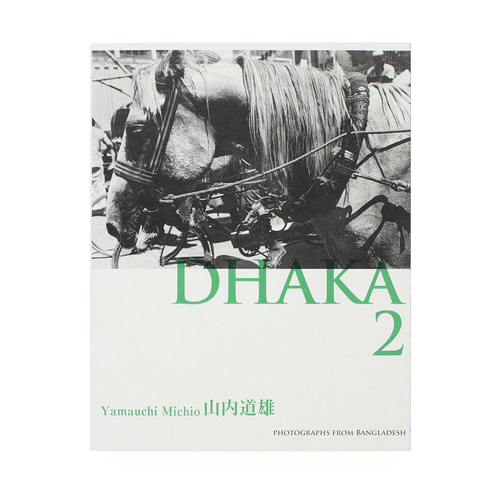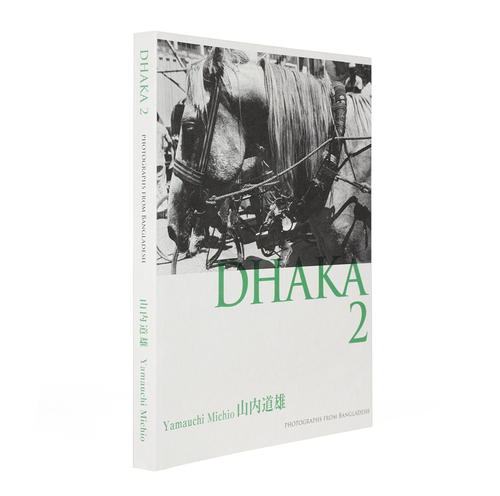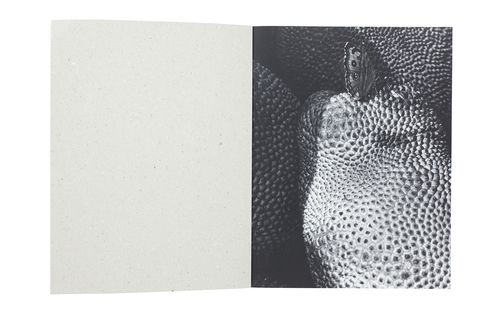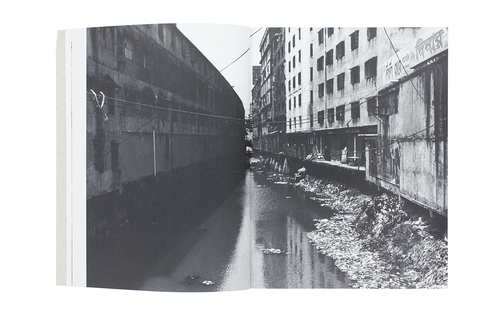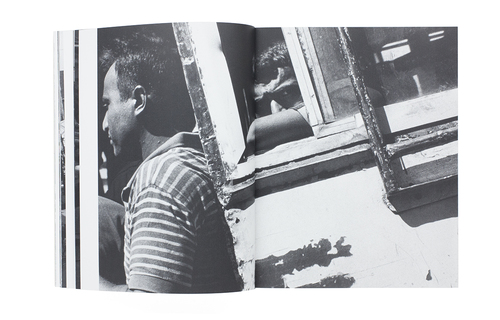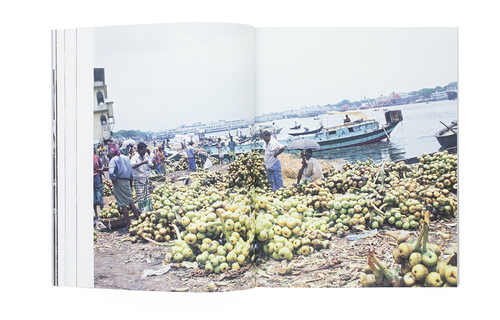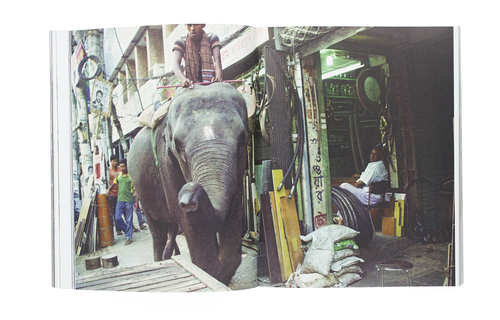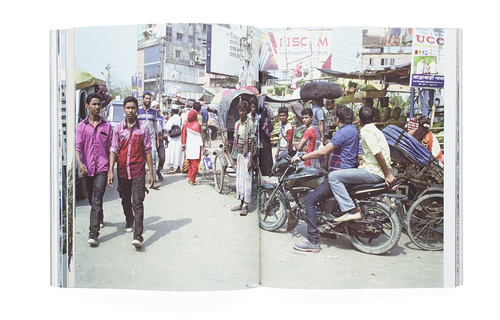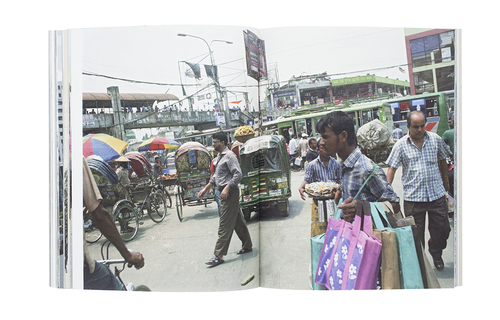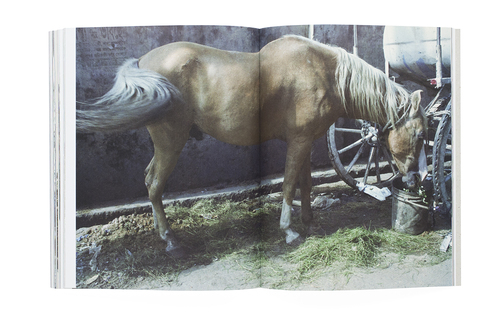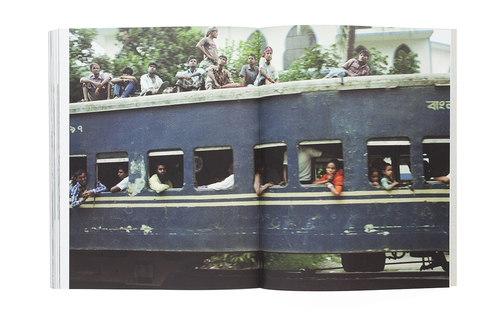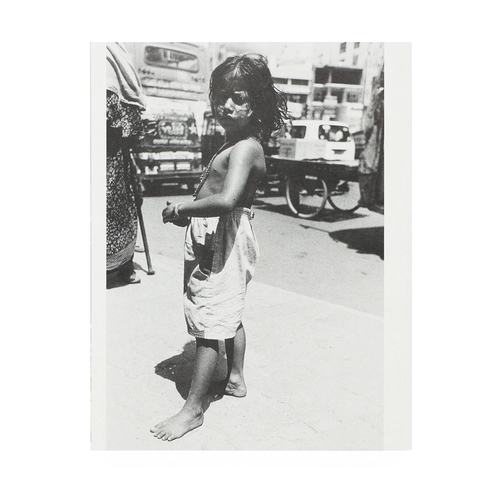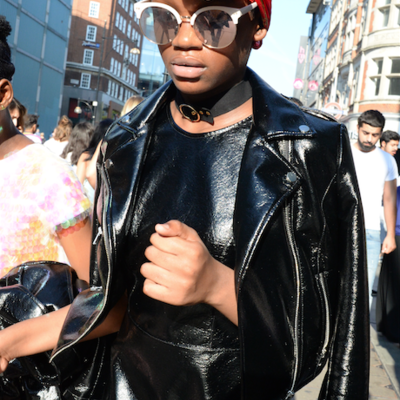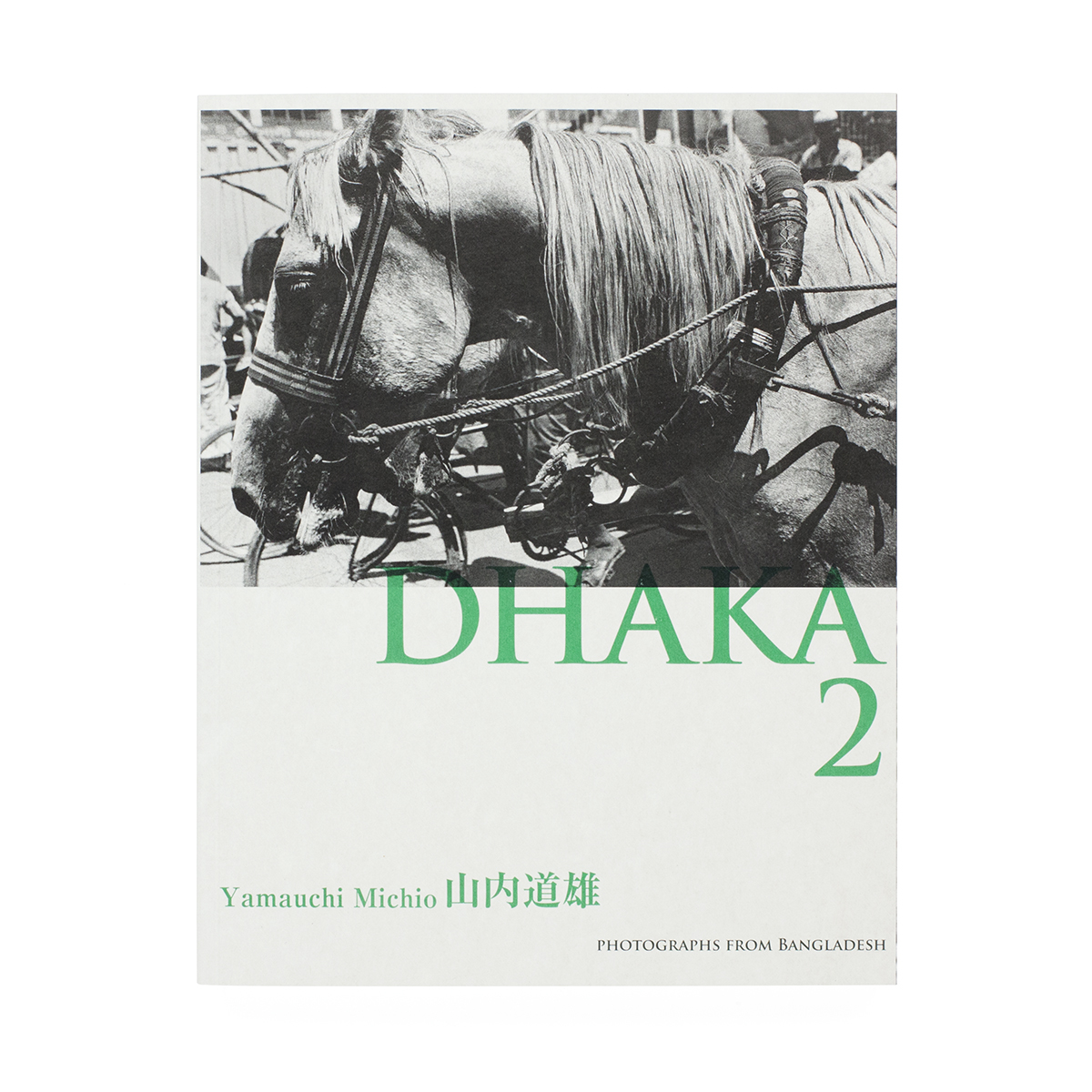
DHAKA2
The 35th Domon Ken Award Winning Work
I first visited Dhaka in May 2013. When I finished shooting all the black and white film I’d brought, I sourced some colour negative stock locally, but the place where I had it developed didn’t dry the film properly, so the shots came out splotchy. Humidity soars so high in the monsoon season that laundry and film never dry. I returned to Japan with my ruined film and set it aside for a year, until it occurred to me, This is the real Dhaka! So this past spring, I took my once-useless film and put together the photobook Dhaka.
That book left me with unfinished business. I couldn’t get Dhaka out of my head, so at the end of April 2015, I hopped a plane back.
Two years had passed but the city hadn’t changed that much. Some roads previously under construction were finished, and perhaps the main thoroughfares had a few more traffic lights. Otherwise my impressions remained largely the same. The screaming children were still startlingly healthy and happy. The paddle-steamers and horsecarts still plied their routes, though it bothered me not to see certain familiar faces — the woman crouching by the side of the road, drinking muddy yellow water from a ditch, the barefoot woman huddled asleep in a corner of the bus terminal below the hotel, that skinny boy who looked so sad even when I handed him a memento snapshot. Many people don’t have a single photo of themselves, so even cheap digital camera prints are treasured. I wanted to give photos to everyone whose picture I took, but I still have a few candid portraits in hand.
Bangladesh is one of the most impoverished countries in Asia. A heavy burden is borne by those on the bottom, especially helpless women and children. Why can’t the world show more consideration to these poor but honest and kind people? My lasting impression is of how Dhaka overflows with raw humanity and power. It is not a place where people's pursuit of money warps their nature, or sends them into depression. More than in any other city I’ve visited, people of Dhaka were friendly, not standoffish or miserly in the least.
-Yamauchi Michio, excerpt from the afterword
$34.62
- Book Size
- 220 x 280 mm
- Pages
- 208 pages, 115 images
- Language
- Japanese, English
- Binding
- Softcover
- Publication Date
- 2015
